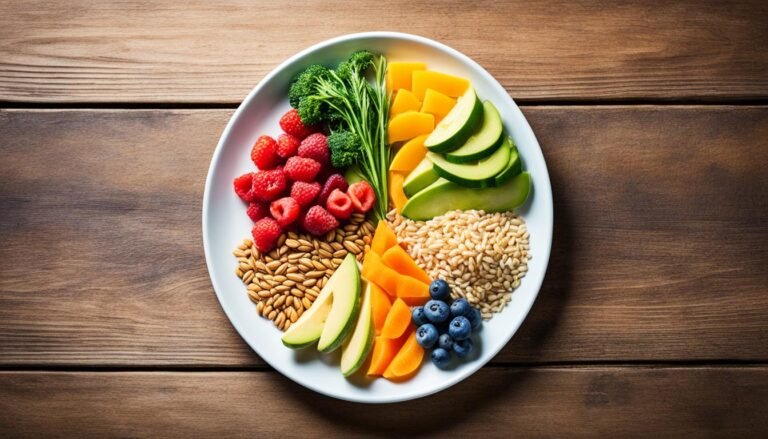Is cheese healthy?
I love cheese, but I often wonder: is it good for me? We all heard cheese was healthy when we were young. Yet, now it’s not so clear. Is cheese a boon or a burden to our health? In this article, we will explore cheese’s benefits and risks. We will also see how to enjoy it in a healthy way.
Cheese is full of nutrients, such as protein, fat, and important vitamins and minerals. Yet, it can be high in saturated fat and sodium. This might worry some people. It’s all about balance. We need to know both the good and bad sides of cheese on our health.
For example, Parmesan is great for calcium. Aged cheddar has CLA for a healthy heart. But soft cheeses might carry listeria. And if someone is lactose intolerant or allergic to milk, they must be careful.
In this guide, we will cover everything you need to know about cheese nutrition. We will discuss the benefits and drawbacks of cheese. Whether you’re a cheese lover or you want to eat healthier, this article is for you. It will help you pick the right cheese for a balanced diet.
Key Takeaways
- Cheese is a nutrient-dense food that provides protein, fat, and essential vitamins and minerals.
- Aged, hard cheeses are good sources of conjugated linoleic acid (CLA), which may have heart-health benefits.
- Cheese can be high in saturated fat and sodium, which can be a concern for those with health conditions like high blood pressure.
- There are thousands of cheese varieties, and the healthiest options tend to be lower-fat, aged, and hard cheeses.
- Moderation and portion control are key when incorporating cheese into a balanced diet.
Cheese as a Source of Nutrients
Cheese offers a lot of nutrients. For instance, it includes high-quality protein which our bodies need. An ounce of cheese contains about 6-8 grams of protein.
It also has fat, mostly saturated fat. Although too much saturated fat can raise cholesterol, cheese’s kind may not be as bad.
Cheese provides protein, fat, and key vitamins
Key vitamins and minerals are in cheese. This includes vitamin B12, vitamin A, phosphorus, and zinc. One ounce provides 15-25% of the calcium we need each day.
Cheese is a good source of calcium
The calcium levels in cheese can change by type. Hard cheeses like Parmesan and cheddar have more calcium. They also have more protein than soft cheeses like cottage cheese.
Cheese’s Impact on Heart Health
There’s a lot of talk about cheese’s high saturated fat. Still, some studies show it might not raise the risk of heart issues. In fact, some cheeses could make the heart healthier.
Cheese may lower risk of heart disease
Studies indicate that cheeses offer anti-inflammatory effects. This can be good for the heart. Cheeses contain specific fatty acids, like CLA, that could be the reason.
Role of conjugated linoleic acid in cheese
CLA, a kind of polyunsaturated fat, is more in cheese from grass-fed animals. This CLA might reduce body fat, better cholesterol, and decrease inflammation. All these help the heart stay in good shape.
Still, we need more studies to really get how cheese links to heart disease risks. The way cheese is made, and how it’s paired with other foods, matters too.

Cheese and Bone Health
Cheese is rich in calcium, great for strong bones. One ounce gives 15-25% of daily calcium needs.
It also has phosphorus, helping with bone health. Phosphorus and calcium work together for strong bones.
How Cheese Promotes Stronger Bones
More cheese means denser bones and less risk of osteoporosis. It’s great for older adults. The mix of calcium and phosphorus in cheese supports strong bones.
Hard, aged cheeses like Parmesan and cheddar get stronger with age. This is because aging makes the calcium and phosphorus easier for our bodies to use.

Choosing Healthy Cheeses
For Nigerians focused on health, picking the right cheese matters. Choosing lower-fat and lactose-free ones can help. This way, you get to enjoy cheese’s flavor with fewer health worries.
Lower-fat Cheese Options
Opting for cheeses marked “low-fat” is wise. They contain 3 grams of fat or less in each serving. You can also check out reduced-fat versions. These have a minimum of 25% less fat than the usual. They offer a good middle ground between full-fat and non-fat options.
Fresher cheeses like cottage cheese, ricotta, and mozzarella are good choices. They’re usually lower in fat and calories. This is compared to harder, aged cheeses.
Lactose-free Cheeses
Those with lactose intolerance can go for aged, hard cheeses. Cheddar and Parmesan, for example, are low in lactose. There are also lactose-free cheese options. This lets everyone enjoy cheesy flavors without any tummy troubles.
Moderation is Key
Cheese is fine in a healthy diet but you should go easy. It’s packed with calories, fats, and salt. So, watching how much cheese you eat is essential.
Portion control matters for cheese
Just how much cheese is “just right”? About 1 ounce, the size of a 1-inch cube, is a good standard. Eat too much, and you’ll take in extra calories and fats.
Plan for cheese in a balanced diet
When including cheese in your meals, be smart about it. Think about your overall diet plan. Choose cheese types that are lighter and pair them with healthy, high-fiber foods.
If you struggle with health issues such as high blood pressure, watch your cheese intake. Looking for options lower in salt might be a good idea. A talk with a dietitian can guide you on the right amount to fit your needs.
Conclusion
Cheese is not all bad news. In moderation, it can offer key nutrients like protein and calcium. However, it also comes with high saturated fat and sodium. These points are important for people with heart issues or high blood pressure.
To make cheese a healthy part of your diet, choose lower-fat types. It’s also wise to watch your portion sizes. Including cheese with lots of fruits, veggies, and whole grains is a good idea.
Talking to a healthcare expert or a dietitian about your cheese intake is helpful. They can guide you on the best amount for your health. Remember, keeping a good balance is crucial. This way, you can enjoy cheese and stay healthy.






